See the History of Ticker-Tape Parades Beneath Your Feet on Broadway’s Canyon of Heroes
Uncover the history of NYC's confetti-covered parades that have been running since the 1880s!


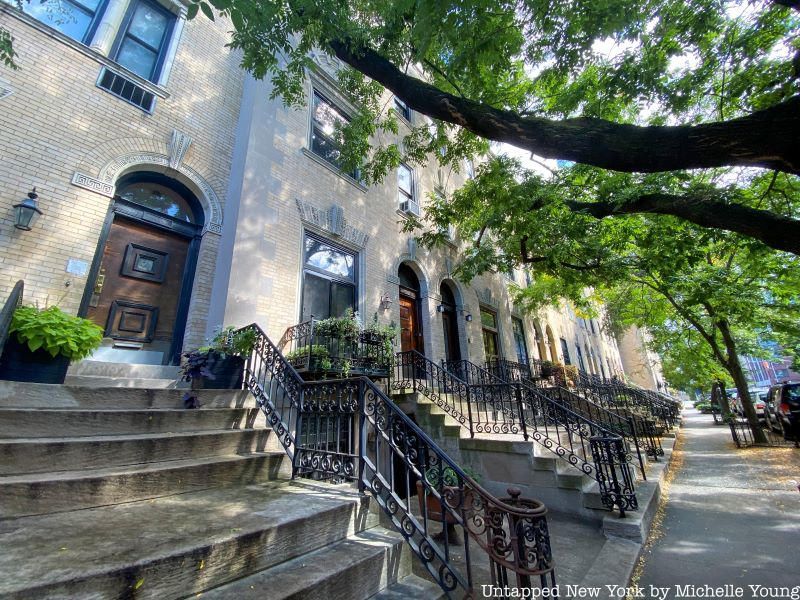
Sitting at the northern end of Manhattan is Harlem, one of the city’s most prominent neighborhoods. Originally Harlem was founded as a Dutch village in the 17th century and has since transformed into a leading cultural and culinary center for Black Americans. In the 19th century the Harlem area was predominantly occupied by Jewish and Italian Americans until African American residents arrived in droves from the southern United States at the beginning of the 20th century in what came to be known as the Great Migration. During the 1920s, Harlem would become the center of the Harlem Renaissance — an intellectual and cultural revival of African American art, dance, music, fashion, and literature.
Today, the greater Harlem area is split into three sections: West, Central, and East Harlem. From containing the only remaining cast-iron watchtower left in the city to serving as the home for some of the country’s most influential cultural and artistic institutions, Harlem has much to discover. Read on to learn more about Harlem’s legacy in New York City.
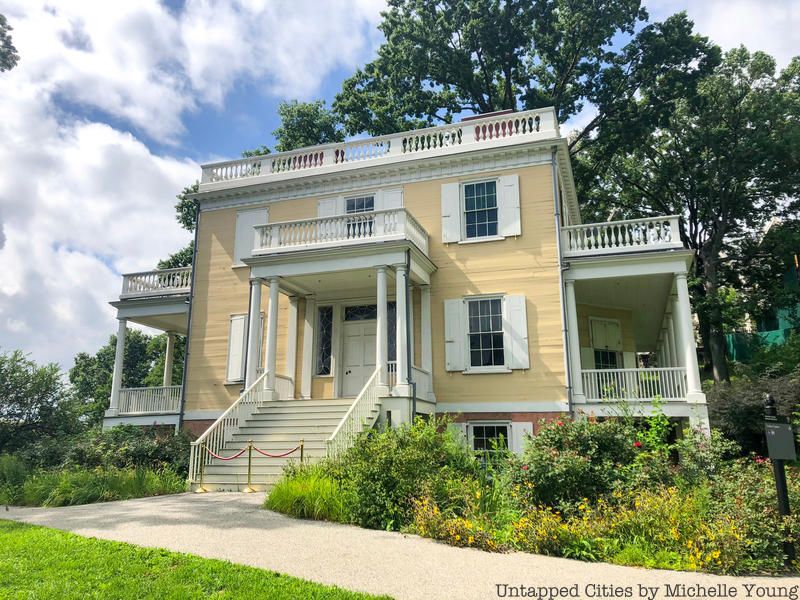
From his humble beginnings as an orphan on the Caribbean island of Nevis, Alexander Hamilton went on to become the United States’ first Secretary of the Treasury. Spending a significant portion of his time in New York, Hamilton commissioned architect John McComb, Jr. to design a country home on 32 acres of land in Harlem. Known as the Grange, the house was completed in 1804, two years before Hamilton would be killed in a duel against Aaron Burr across the Hudson River in Weehawken, New Jersey. It would be the first and only home Alexander Hamilton ever owned.
Hamilton Grange has been relocated multiple times, and it is currently located at 409 W. 141st Street in St. Nicholas Park. The house is listed as a U.S. National Memorial, U.S. National Historic Landmark and is in the U.S. National Register of Historic Places.

Along both sides of West 138th Street and West 139th Street between Adam Clayton Powell Jr. Boulevard and Frederick Douglass Boulevard is Strivers Row. The houses along Strivers Row were built between the years 1891 and 1893 by developer David H. King — known for constructing the 1870 Equitable Building, the 1889 New York Times Building, and a version of Madison Square Garden designed by Stanford White.
On the south side of West 138th Street are red brick and brownstone buildings. Yellow brick and white limestone buildings with terracotta trim, designed in the Colonial Revival style, can be found on the north side of West 138th Street and the south side of West 139th Street. Turning to the north side of West 139th Street, there are dark brick and brownstone buildings in the Italian Renaissance Revival style.
Though the buildings of Strivers Row stood out as outstanding examples of late 19th-century architecture, very few of the homes were sold by King. Originally, the buildings were intended for upper-middle-class white residents, but by 1895, Harlem was being abandoned by white New Yorkers. Despite almost all of the units being foreclosed on by the Equitable Life Assurance Society, which had financed the project, the company refused to sell the houses to the area’s incoming Black residents.
As a result, Strivers Row remained empty until 1920, when the homes became available for African Americans to purchase at $8,000. Some notable figures who have called Strivers Row home include Bill “Bojangles” Robinson and heavyweight boxer, Harry Wills.
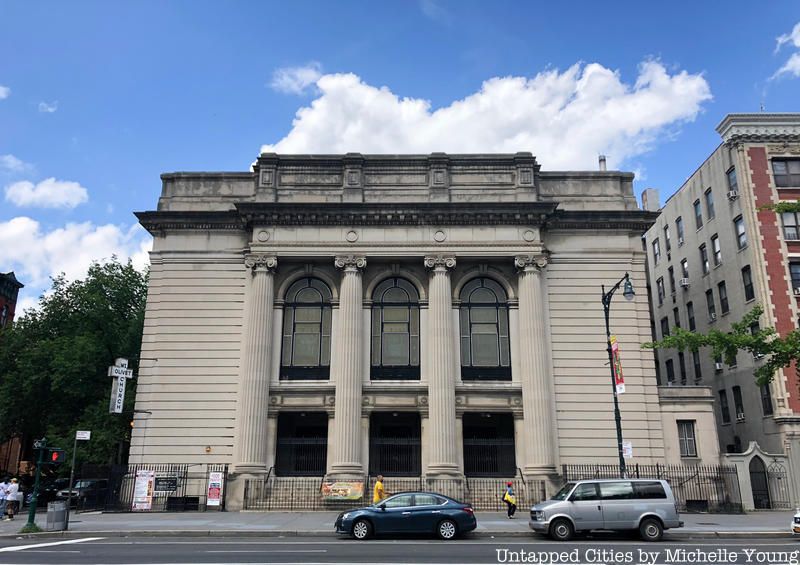
While Harlem is known today as a center for African American culture, it was once the third-largest Jewish settlement in the world behind the Lower East Side and Warsaw, Poland. From around 1870 to 1930, individuals of Jewish ancestry resided in East Harlem — sharing the area with Italian Americans — and in Central Harlem, where the majority of the population was German. A number of the 20th century’s most famous Jews lived in Harlem, such as composer George Gershwin, comedienne Fanny Brice, and singer Sophie Tucker.
During this time period, East Harlem housed 40 to 50 synagogues, while Central Harlem had around 150. One of the most famous synagogues in the area was Ohab Zedek — known for hiring Yossele Rosenblatt, considered to be one of the greatest cantors who ever lived. Rosenblatt rose to prominence after being featured in the first talkie movie, The Jazz Singer, as himself. Ohab Zedek is currently located on the Upper West Side.
Another prestigious synagogue in Harlem was Temple Israel, built in 1907 at 120th Street and Lenox. In 1925, the synagogue was purchased by Mount Olivet, an influential Black congregation in New York. Mount Olivet Baptist Church would go on to become a significant site during the Civil Rights Movement. Many prominent figures have also chosen to give speeches on the church’s steps, including Venezuela’s President Hugo Chavez and Zimbabwe’s President Robert Mugabe. Today, Mount Olivet Baptist Church retains the structure’s Jewish iconography with the Old Testament verse “Jehovah is in his holy temple; be silent, before him, before all the earth,” inscribed on the marble pediment leading to the baptismal pool. The Stars of David can also be viewed at the top of the building’s four columns and in the stained glass windows.
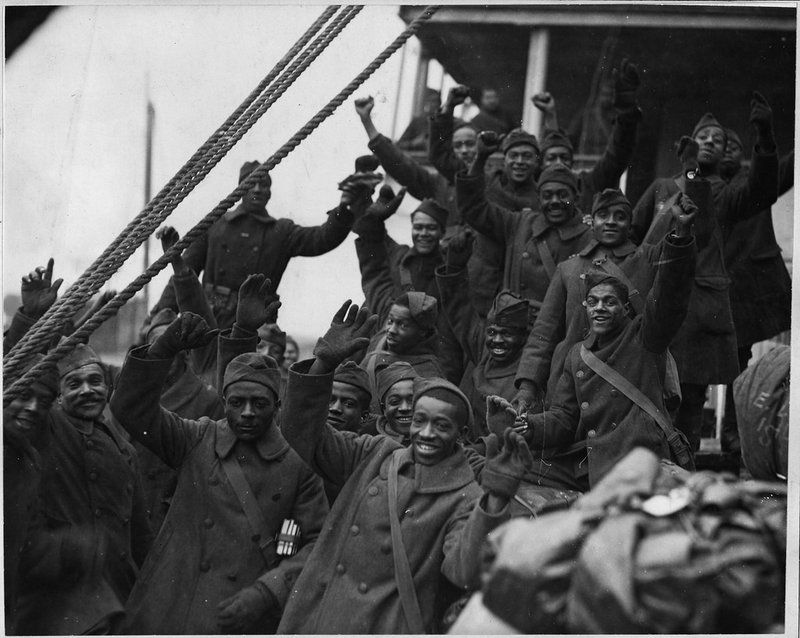
Located between West 142nd and 143rd Streets is the 369th Regiment Armory, a historic National Guard Armory built for the 369th Infantry Regiment, or “Harlem Hellfighters.” Established in 1913, the 369th Infantry Regiment became the first National Guard unit in New York State composed solely of African Americans. In addition, the Infantry was one of the first African American regiments to serve with the American Expeditionary Force during World War I, spending 191 days on the frontline — more than any other American unit. In the end, the Infantry would also suffer the most losses out of any regiment, with 1,500 casualties reported.
After a number of Harlem residents expressed their interest in joining the military, the 15th Regiment was founded for deployment to France during World War I — reaching a total of 2,000 members by 1917. In 1918, the regiment was reorganized as the 369th and went on to be housed at Astor Row on West 130th Street. Following the reorganization, the city’s Armory Board began building an armory for the regiment, with its medieval-inspired drill shell finished in 1924. The armory’s administration building, designed by John S. Van Wart and Sidney Wein in the Art Deco style, was completed a few years later between 1930 and 1933. Today, the armory houses the 369th Sustainment Brigade — a descendant of the 369th Infantry Regiment.
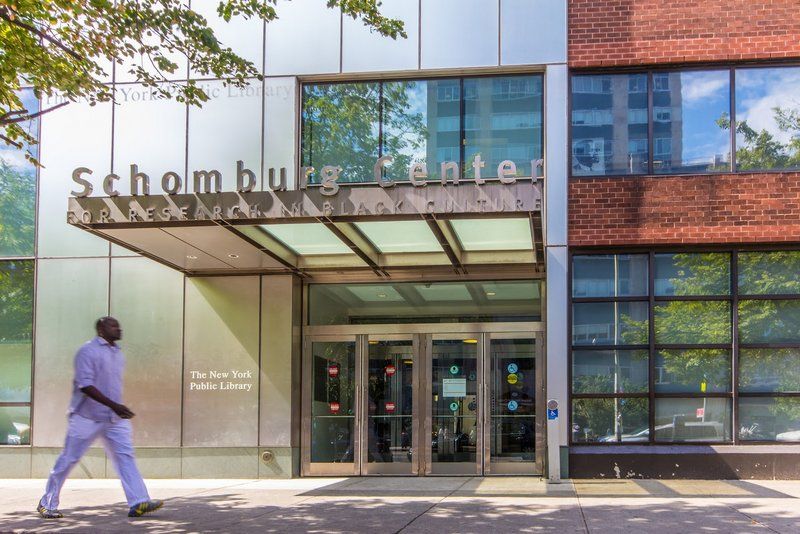
Given the large African American presence in Harlem, it’s no surprise that the neighborhood houses some of the city’s most important cultural and artistic institutions dedicated to conserving the work of Black Americans. One such institution is the Schomburg Center for Research in Black Culture, a research library of the New York Public Library system. Founded in 1905 by Arturo Alfonso Schomburg, the center is known today as one of the world’s leading cultural institutions devoted to the research, preservation, and exhibition of materials focused on African Americans, African Diaspora, and African experiences. Schomburg, who immigrated to the United States from Puerto Rico in 1891, wrote prolifically on Caribbean and African-American history.
There’s also the National Black Theatre, which holds the largest collection of Nigerian New Sacred Art in the Western Hemisphere, with featured items including hand-carved wood totems and traditional copper, aluminum, and brass relief art. Formerly located in an abandoned firehouse, the Caribbean Cultural Center African Diaspora Institute (CCCDAI) is an art, culture, education, and media organization that helps to advance cultural equity, racial, and social justice for African descendant communities. The center offers several fellowships every year which support leaders and creators of color.
Over the years, the Studio Museum in Harlem has displayed multiple exhibits commenting on the issues affecting Black Americans, including a 1985 display entitled Tradition and Conflict: Images of a Turbulent Decade 1963-1973, which featured the work of artists grappling with the Civil Rights Movement and its aftermath.
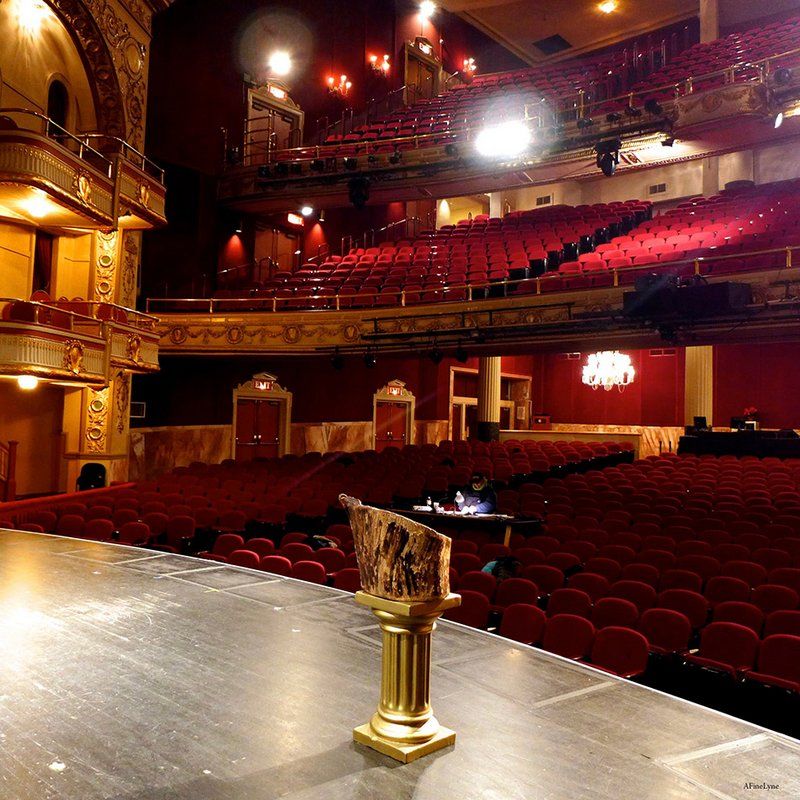
With the influx of African Americans to the neighborhood during the Great Migration, Harlem came to be known as a center of Black culture in the United States. One institution that has gained worldwide fame is the Apollo Theater. When the theater first opened its doors in 1914, it was as the Hurtig & Seamon’s New Burlesque Theater, a whites-only establishment. After being purchased by Sidney Cohen in 1933, the theater reopened one year later under its current name, beginning to cater to the community’s Black population.
Some of the world’s brightest stars have played at the Apollo Theater, including Marvin Gaye, the Jackson 5, and Billie Holiday. The theater also played an influential role in the Civil Rights Movement, becoming the first theater to allow mixed-race audiences after its reopening. On television, the Apollo Theater has served as the basis for Showtime at the Apollo, a nationally syndicated variety show to present new talent.
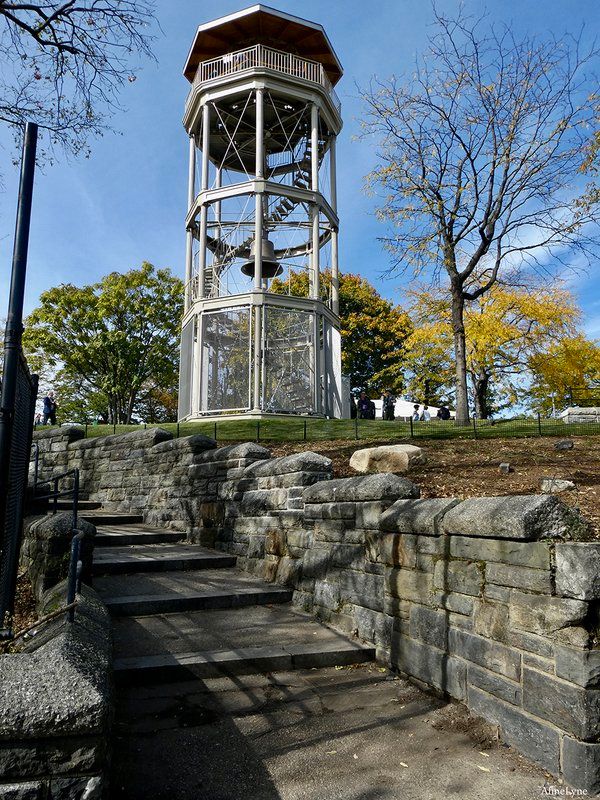
Inside Marcus Garvey Park is the Harlem Fire Watchtower — also known as the Mount Morris Fire Watchtower — the only surviving cast-iron watchtower left in New York City. Completed in 1857, the watchtower was used by volunteer residents to watch for fires, which were common given the area’s wooden structures. At first, watchers spread the word about an impending fire by ringing a bell before switching to electric telegraphs. Eventually, following the invention of pull boxes, fire towers were rendered obsolete, and most across the city were discontinued, though Harlem’s would persist due to its enclosed location within the park.
During the New Deal era, as part of the Works Project Administration jobs program, the area surrounding the watchtower was rebuilt, leading to the creation of a gracious plaza, stone retaining wall, and wide steps approaching the park’s summit. In 1967, the tower would be named a city landmark, and it was added to the National Register of Historic Places in 1976. Over the years, weather, lack of maintenance, and neglect took their toll on the tower’s structure. To fix this, the tower was disassembled and reconstructed to ensure its stability and reopened to the public in December 2019.
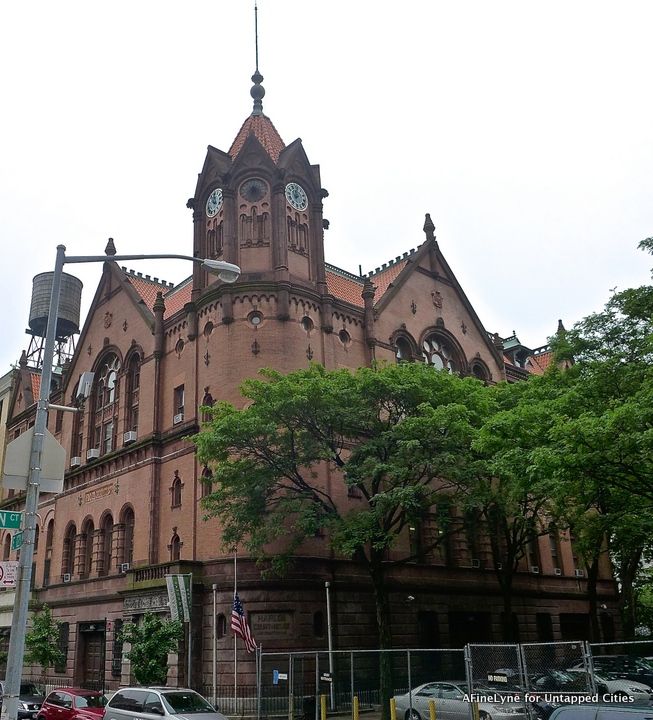
Located on East 121st Street near Mount Morris Park is the Harlem Courthouse, a gothic and Romanesque-style building constructed from 1891 to 1893 by the architecture firm Thom & Wilson. Currently, the courthouse’s prison remains the oldest structure in New York City ever used as a jail, with five tiers, 40 cells, double bunk bed frames, and cell doors remaining intact. On the outside, the court is defined by its octagonal corner tower and two-faced clock. Inside on the third floor is a 1936 mural commissioned for the Federal Art Project entitled “Exploitation of Labor and Hoarding of Wealth.”
Since opening, the Harlem Courthouse Prison has served as a magistrate’s court, small claims court, and women’s jail. In addition, it was used during the 1966 New York smog as a laboratory to measure the city’s air quality. Today the Harlem Courthouse is home to the Harlem Community Justice Center (HCJC) — a neighborhood-based community court committed to bridging the gap between the court and community to achieve fairness and systematic equity in housing, health, and access to justice.
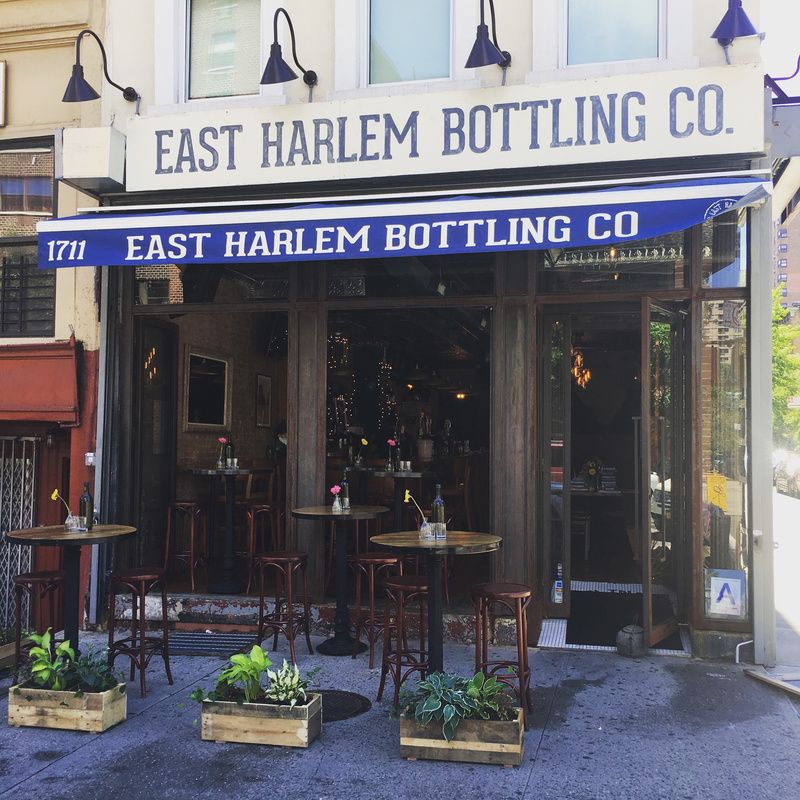
One of Harlem’s most illustrious areas is Sugar Hill, a National Historic District bounded by West 155th Street to the north, West 145th Street to the south, Edgecombe Avenue to the east, and Amsterdam Avenue to the west. The neighborhood has its very own beer named after it produced by the Harlem Brewing Company, which created its first batches of beer in a small studio apartment across the street from Marcus Garvey Park during the 1990s. The company was later formally founded in 2000 and has since gone on to win the People’s Champ Award for Best Brews NYC and Best Beer at the annual Beer and Bacon Fest at Citifield.
In East Harlem, the East Harlem Bottling Company provides a vibrant space for friends and family to grab drinks together. Located just a few blocks from the Central Park Conservatory Gardens and El Museo Del Barrio, it’s a great place to explore when visiting the area. Another important bar in the neighborhood is Harlem Hops — Manhattan’s first 100% African-American-owned New York City craft beer bar. Harlem Hops aims to create a relaxing and welcoming space perfect for tasting beers from around the world.
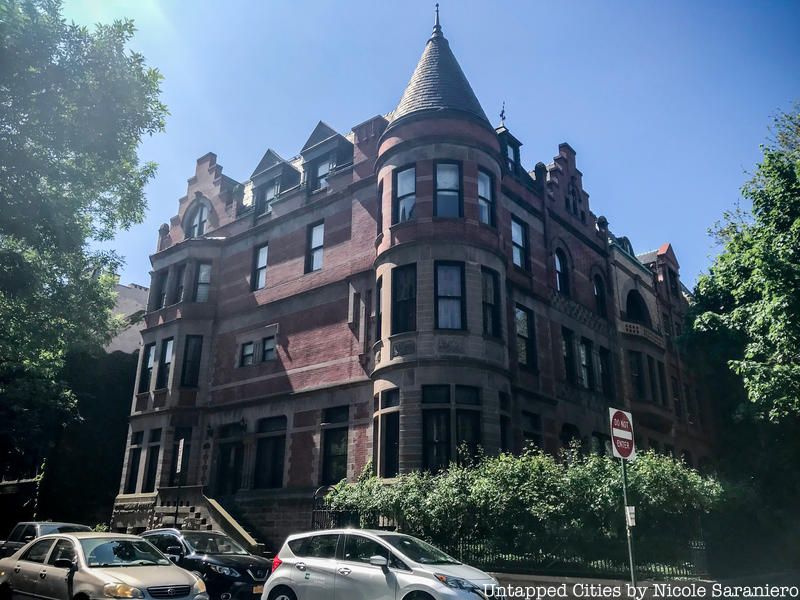
In film and television, the Harlem area has served as a central setting. For fans of Wes Anderson movies, The Royal Tenenbaums house can be found in the Sugar Hill section of Harlem. Located on 144th Street and Covenant Avenue, the house was used for more than just exterior shots, with almost all of the interior scenes within the home filmed on the premises. The only exception to this was kitchen scenes, which were filmed in the house next door as the Tenenbaums’ kitchen had no windows. An iconic scene from the movie featured at the house includes Owen Wilson’s character ramming into it with his car.
One television show that features Harlem is the 2020 drama The Undoing, starring Nicole Kidman, Hugh Grant, and Donald Sutherland. The show’s main character, Elena Alvez, hails from East Harlem, living at 102 E. 103rd Street, just a few blocks east of The Museum of the City of New York. Elena’s art studio can be found at 181 Lenox Avenue (also known as Malcolm X Boulevard) on 119th Street. The same location for the studio was also used as Pop’s barbershop in the Netflix show, Luke Cage.
Next, check out 25 Best Things To Do In Harlem: An Untapped New York Guide!
Subscribe to our newsletter